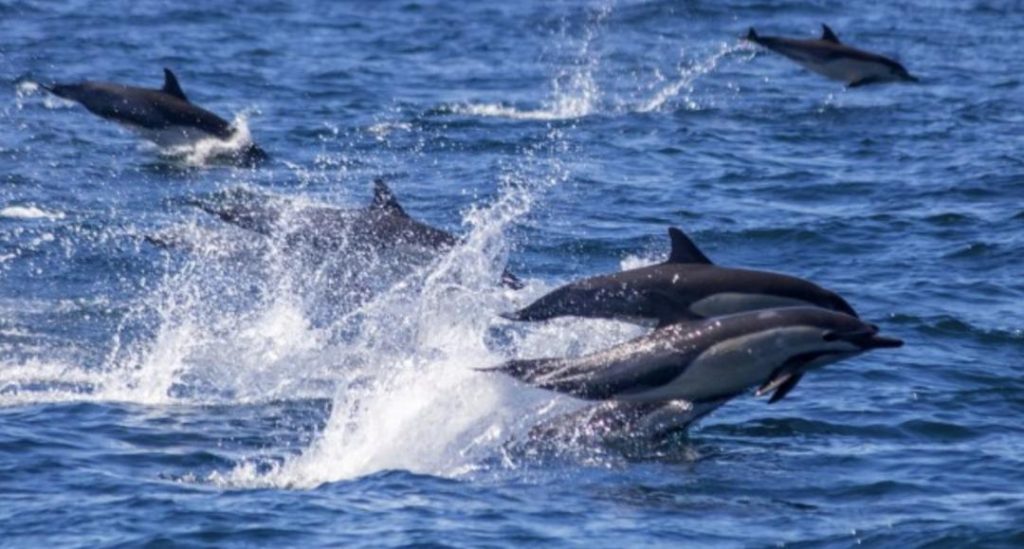
Dolphins & Whales Regularly Socialise with Each Other: Study
In a fascinating discovery, researchers from Griffith University have found that dolphins and whales regularly socialise with each other, engaging in playful interactions that are often mutual. The study, which analyzed videos and photographs of 199 separate events involving 19 species of baleen whales and dolphins, has shed light on the previously unknown world of cetacean socialization.
According to the research, the most common interaction between dolphins and whales involves dolphins swimming near the whale’s head, often in a playful and curious manner. This behavior was observed in a variety of species, including bottlenose dolphins, which were found to be the most involved dolphin species in these interactions.
The study, which was published in the journal “Marine Mammal Science,” used a combination of video and photographic evidence to analyze the interactions between dolphins and whales. The researchers found that these interactions were not limited to a specific type of whale or dolphin, and that many different species were involved.
One of the most striking findings of the study was the level of mutual playfulness exhibited by the dolphins and whales. In many cases, the dolphins and whales appeared to be engaging in a game of “keep away,” where the dolphins would swim up to the whale and then quickly dash away, only to return and try again. This behavior was observed in both large and small groups of dolphins and whales, and was found to be a common occurrence in many different species.
The researchers believe that these interactions may be an important part of the social behavior of both dolphins and whales, and may play a role in helping to strengthen bonds between individuals and groups. In particular, the study suggests that these interactions may be an important way for young dolphins and whales to learn important social skills, such as how to interact with other members of their species.
The study’s findings have important implications for our understanding of the behavior of dolphins and whales. For many years, these animals have been studied primarily in terms of their individual behavior, with little attention paid to their social interactions. However, this study suggests that socialization is a critical component of the behavior of both dolphins and whales, and that these interactions may be an important part of their overall social structure.
In addition to providing new insights into the behavior of dolphins and whales, this study also highlights the importance of protecting these animals and their habitats. As we continue to learn more about the behavior of dolphins and whales, it is clear that these animals are facing a range of threats, including habitat destruction, pollution, and hunting. By working to protect these animals and their habitats, we can help to ensure that they continue to thrive for generations to come.
In conclusion, the study’s findings suggest that dolphins and whales regularly socialise with each other, engaging in playful interactions that are often mutual. The study’s findings have important implications for our understanding of the behavior of dolphins and whales, and highlight the importance of protecting these animals and their habitats. As we continue to learn more about the behavior of dolphins and whales, it is clear that these animals are an important part of our planet’s biodiversity, and that we must work to protect them for the benefit of all living things.
Source:






